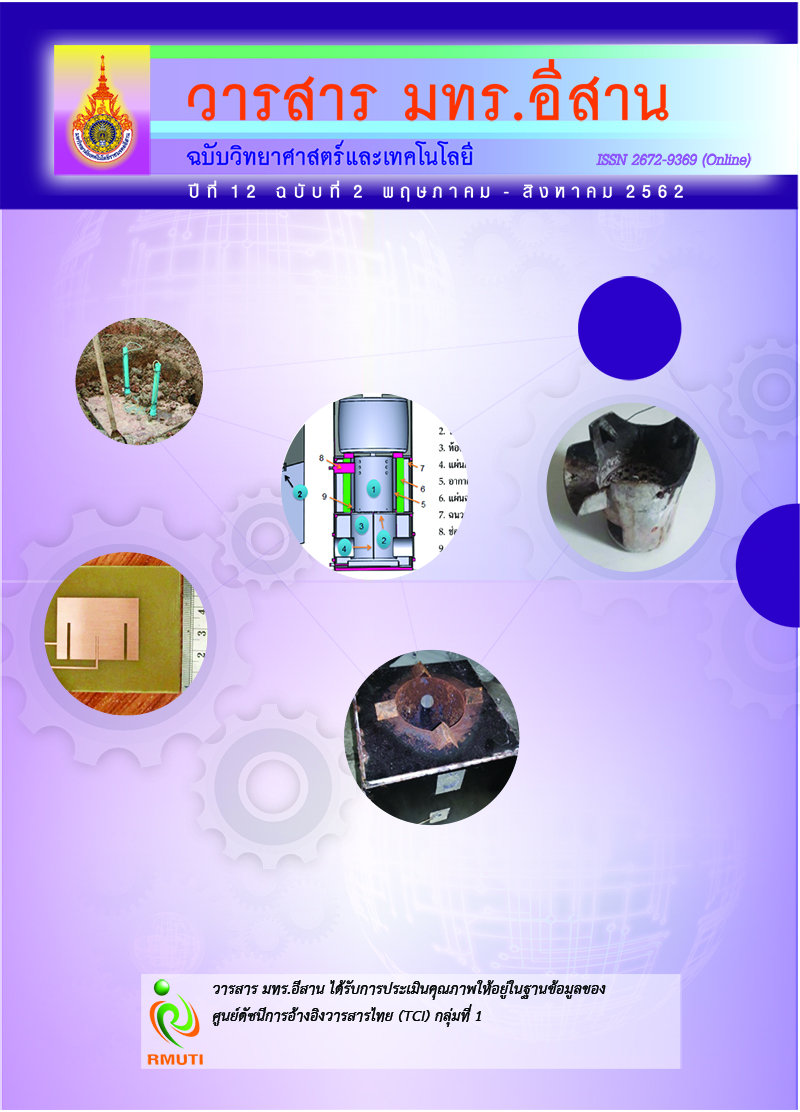Chemical Properties, Antioxidant Activity and Sensory Evaluation of Fermented Vinegar from 3 Cultivars of Rice
Main Article Content
Abstract
This study was conducted to produce fermented vinegars from three cultivars of rice, amely hommali brown rice sangyod and riceberry cultivars. The aim of the present study was to determine the chemical properties of the vinegars and their antioxidant activities. Sensory evaluation of the vinegars based on the-9 point hedonic rating scale was included in this study. Vinegar fermentation was performed by inoculating 10 % (v/v) of Acetobacter pasteurianus into each of three rice wines with their initial alcohol content were adjusted to 7 % (v/v). The fermentation was conducted for 15 days at ambient temperature (30 oC) and sampling was performed at 5-day intervals. It was observed for all samples that the level of alcohol decreased continuously over the fermentation period, which was consistent to the increased level of acetic acid. At the end of the fermentation process the fermented vinegar produced from the Sangyod rice exhibited the highest level of acetic acid of 6.26 %. Antioxidant activities observed for the vinegars produced from the hommali brown rice, Sangyod and Riceberry cultivar were 74.95 72.56 and 74.73 %, respectively. The results of the consumer acceptance test of ready-to-drink fermented rice vinegar showed that the average score of overall acceptance was not significantly different. (P > 0.05). The score was like slightly.
Article Details
References
[2] Boonsupa, W., Thongdonpean, K., and Keawmad, P. (2017). Chemical property, Antioxidant Activity and Sensory Evaluation of Fermented Vinegar from 2 Type of Black Glutinous Rice. Science and Technology Nakon Sawan Rajabhat University Journal. Vol. 9, No. 10, pp. 69-77 (in Thai)
[3] Rocejanassaroj, A. (2008). Antioxidant in Black Rice, Black Sticky Rice and Red Rice; Protective Effect on Cytotoxicity and Genotoxicity by Free Radicals and Gene Expression
on Lipid Accumulation in Culture Cells. M.S. Dissertation Chulalongkorn University (in Thai)
[4] Aguiar, A., Nascimenta, R. A. D. A., Ferretti, L. P. and Goncalves, A.R. (2005). Determination of Organic Acids and Ethanol in Commercial Vinegars. Brazilian Journal of Food Technology. pp. 51-56
[5] Brand-Williams, W., Cuvelier, M. E., and Berset, C. (1995). Use of Free Radical Method to Evaluate Antioxidant Activity. Lebensm Wiss Technology. Vol. 28, pp. 25-30. DOI: 10.1016/S0023-6438(95)80008-5
[6] Singleton, V. L. and Rossi, J. A. (1965) .Colorimetry of Total Phenolics with Phosphomolybdic Phosphotungstic Acid Reagents. American Journal of Enology and Viticulture. Vol. 16,
Issue 3, pp. 144-158
[7] Danvirutai, P. and Laopaiboon, P. (2005). Fruit Wine, and Sato, How Produced with Confidence. Fermentation Research Center for Value Added Agricultural Products. (in Thai)
[8] Palaniveloo, K., and Vairappan, C. S. (2013). Biochemical Properties of Rice Wine Produced From Three Different Starter Cultures. Journal of Tropical Biology and Conservation. Vol. 10, pp. 31-41
[9] Jitjaroen, W. (2013). Wine maker handbook. Chaing Mai Publishers. (in thai)
[10] Chun, J. E., Baik, M. Y. and Kim, B. Y. (2014). Manufacture and Quality Evaluation of Purple Sweet Potato Makgeolli Vinegar Using a 2-Stage Fermentation. Food Science and Biotechnol. Vol. 23, Issue 4, pp. 1145-1149. DOI: 10.1007/s10068-014-0156-7
[11] Shimoji, Y., Tamura, Y., Nakamura, Y., Nanda, K., Nishidai, S., Nishikawa, Y., Ishinara, N., Uenakai, K., and Ohigashi, H. (2002). Isolation and Identification of DPPH Radical Scavenging Compounds in Kurosu (Japanese Unpolished Rice Vinegar). Journal of Agricultural and Food Chemistry. Vol. 50, pp. 6501-6503. DOI: 10.1021/jf020458f


